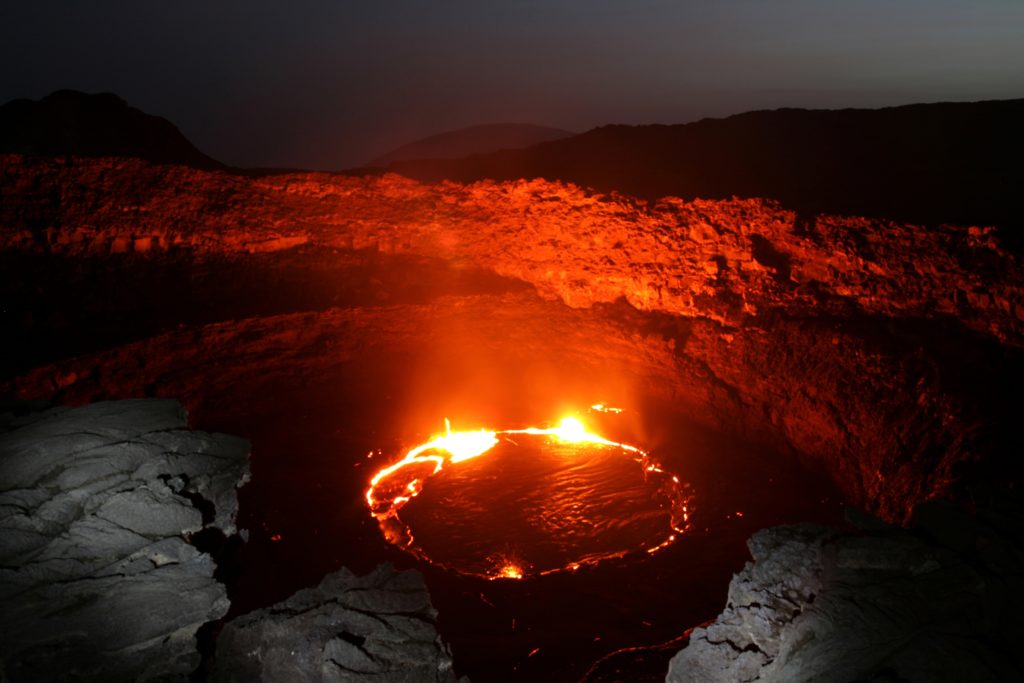
Weather or Not
When it comes down to figuring out security – how much you need, how to implement it, and when to implement, there are a few strategies and tips to figuring out your security bottom-line. Starting with working with a company that already has the answers and best practices figured out, they can work with you to establish a common goal.
Using cameras, radios, people, barriers, locks and what have you – protecting against other people or relatively known threats can be relatively simple when your really break it down and do your research.
However what do you do to protect against the unexpected?
In Hawaii, thousands of people are being evacuated due to the volcano erupting. Granted – they were well informed at the time they chose to live where they do, that they were choosing to not just live on ‘a’ volcano, but an active volcano at that.
There isn’t a security guard, Police Officer, CCTV camera, lock, or barrier that is going to protect against the impending doom of a lava flow.
In this situation – the only security measure one can really take when they’re concerned about living on an active volcano, is don’t. Or, be prepared that you may have to grab what you can in a moments notice to leave.
Perhaps all of their homes won’t be destroyed – however the roads and infrastructure leading to them can very will make them now unreachable.
In Ontario, volcano’s are something we only hear about on the news and fortunately don’t need to be a part of any threat risk assessment.
However we do have our own issues that can be addressed.
We can start with climate. In Canada – specifically Ontario – we have four very distinct seasons. Each one bringing with it their own natural threats.
Winter. Easily the one that most likely sticks out first. Snow, Ice, Blizzards, freezing cold – the things a Polar Bears dreams are made of.
While you’re doing your threat risk assessment in the middle of January, have you taken into account these factors?
While torrential rain may temporarily cause you to pull over at the side of the road, the likelihood of it keeping you in one spot over night is fairly slim. Snowstorms on the other hand, can leave you stranded.
When preparing for an event, it is vital that the weather be high up on your check list. Especially if you’re dealing with people coming into a venue – do you have something in place if the weather turns and people are stuck?
This doesn’t mean keeping a stock pile of bottled water and canned beans nearby, but have emergency contacts and a snow plan in place in case your shift runs longer then you thought it might.
Ice and cold are other nasty factors. If you’re running an event outside and temperatures plummet, are you prepared to offer shelter and warmth? In regards to ice – having something in place to limit ice build up and warn guests of particularly bad spots is another must have.
Spring, Summer, and even Fall we shed our toques and parkas and defrost. This doesn’t mean for security’s sake we can ditch the weather forecast.
The warmer months bring a combination of hot and cold air, humidity, and pressure systems that cause thunder storms. While these are relatively minor and not typically something that will register high on security radar, having some plans in place in the event of a situation is still a must.
Power failures and wind are some of the more common outcomes of a thunderstorm. Having a backup safety lighting system in the event of a black out is an import factor should you need to evacuate or move people. If people can’t see where they’re going, it makes your job that much harder. Luckily in today’s society almost everyone is carrying a smartphone and has the ability to turn it into a flashlight, but security shouldn’t be relying on someone else’s flashlight. A small portable flashlight should be something easily kept on hand at all times – and during any season.
With wind, although there is not much you can physically do to hold it back, being prepared to direct people in a direction where there is less of a threat is another key detail. A few weeks ago there was a huge wind storm and not even the city was spared. Debris, construction site items, signage, if it was loose, it became a projectile. Blocking roads, cautioning people, and redirecting them to safety became security’s number one job that afternoon.
Extreme weather can bring an array of security issues although mostly unlikely especially in more urban areas. Tornados and Hurricanes depending on your location may be something you need to keep in your security plan.
If you’re in an area prone to earthquakes, definitely having a plan in place for earthquakes is a priority.
Being aware of your surroundings, your geographical location, and the weather are all integral parts of a security plan. Having a plan is half the battle, and when it really comes down to it – as with all Security back up plans, ideally you won’t have to use it.
Guest Blogger Rayna Davies
Rayna Davies is a graduate and practitioner of Business Management. She has developed an expertise in blogging, covering subjects like travel, world events and security. Having grown up with a father who has developed an expertise in Physical Security and Executive Protection in the RCMP and two major corporations, she has personally observed and  experienced many security details. These experiences have included personally meeting HM Queen Elizabeth, Prime Minister Jean Chretien and many celebrities. She presently assists Sentinel Security in Executive Protection workshops and guest blogging and also assists Gloprosec Preventative Services in Intelligence gathering and Business Administration. Her passions include World travel, having visited every continent. She currently is on maternity leave and providing daily close protection for a baby and a toddler and spending time with her husband who is a Police Officer.
experienced many security details. These experiences have included personally meeting HM Queen Elizabeth, Prime Minister Jean Chretien and many celebrities. She presently assists Sentinel Security in Executive Protection workshops and guest blogging and also assists Gloprosec Preventative Services in Intelligence gathering and Business Administration. Her passions include World travel, having visited every continent. She currently is on maternity leave and providing daily close protection for a baby and a toddler and spending time with her husband who is a Police Officer.



